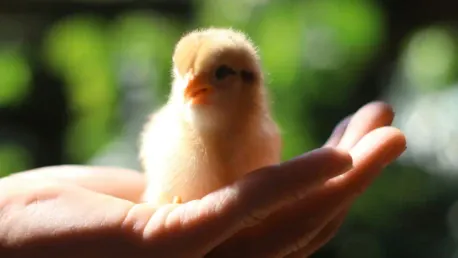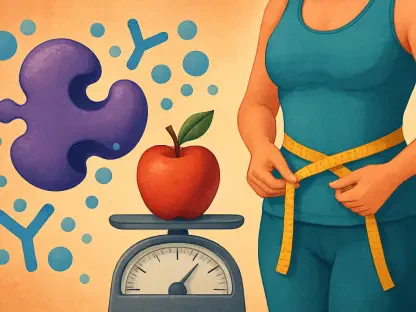The rise of avian influenza presents a significant threat to both domestic and wild bird populations, making it imperative to adopt robust biosecurity measures to prevent its spread. This issue is increasingly pressing, especially considering recent reports of bird flu virus detections in various parts of Hawai‘i. Avian influenza, particularly the highly pathogenic strain (HPAI or H5N1), poses a substantial challenge to the poultry industry and overall animal health. Effective strategies must be implemented to protect both commercial poultry operations and backyard bird flocks from potential outbreaks.
1. Increasing Biosecurity Measures for Bird Owners
To reinforce biosecurity and prevent avian influenza, both commercial poultry operations and backyard bird owners need to understand and implement thorough preventive measures. The Hawai‘i Department of Agriculture advocates for the separation of domestic birds from wild birds to reduce the risk of transmission. Commercial poultry farms typically have stricter biosecurity protocols in place; however, the focus should also be on educating and assisting backyard bird owners, who might not be as familiar with necessary precautions. Feeding wild birds should be avoided to minimize the chance of viral spread among flocks.
Furthermore, flock owners should regularly monitor their birds for symptoms of avian influenza. These symptoms might include sudden death with no prior indication of illness, a noticeable decrease in energy and appetite, a drop in egg production, or the production of misshapen eggs. Swelling of various body parts such as eyelids, comb, wattles, and shanks, discoloration, respiratory distress, nasal discharge, and neurological symptoms like twisting of the head and neck or stumbles are additional signs. Immediate action, including isolating affected birds and notifying authorities, is crucial upon detecting any of these symptoms.
2. Report Sick or Dead Birds
Ensuring prompt reporting of any irregular health issues in birds is a vital step in controlling avian influenza outbreaks. If an unusual illness or multiple cases of sick or dead birds are observed, whether in poultry, livestock, or wild birds, it is crucial to report these cases to the Hawai‘i Department of Agriculture Animal Industry Division (HDOA AID). Individuals can reach out via phone at 808-483-7100 from Monday to Friday between 7:45 a.m. to 4:30 p.m., or email at hdoa.ldc@hawaii.gov. Precise details about the number of affected birds, their species, and exact locations should be provided to facilitate accurate assessment and response. It is important to note that not all dead birds will necessarily be tested, as the decision depends on the specific situation and context of the report.
Encouraging collective vigilance among bird owners and the general public can significantly improve the timely detection of potential outbreaks. This collaborative effort aids in the early containment of the virus, preventing it from spreading further. Public awareness and participation play an integral role in complementing official surveillance and control measures.
3. When Removing Dead Birds
Proper handling and disposal of dead birds are essential to prevent further spread of avian influenza. Individuals must take necessary precautions when dealing with carcasses to ensure their safety and minimize any risk of contamination. It is recommended to wear disposable gloves or use a plastic bag turned inside out to safely pick up the dead bird. This method prevents direct contact and reduces the possibility of transmitting the virus to the handler. The carcass should then be double-bagged securely and disposed of with regular trash to avoid any accidental exposure.
After handling a dead bird, it is imperative to thoroughly wash hands and disinfect clothing and shoes to eliminate any residual virus particles. Awareness of any subsequent health symptoms that might develop is crucial, and one should seek medical attention immediately if any worrying signs appear. By taking these steps, individuals can effectively contribute to reducing the transmission of avian influenza.
4. Animals Other Than Birds
Avian influenza does not only pose a threat to birds but can also infect a variety of other animals including cattle, cats, dogs, goats, seals, and other mammals. It is essential to reduce or eliminate exposure of these animals to wild birds to prevent the spread of the virus. For pet owners, vigilance is key. If there is a concern about potential HPAI infection in animals, consulting with a private veterinarian is strongly advised. Veterinarians can provide professional advice and appropriate steps to safeguard pets from avian influenza.
Increasing biosecurity involves more than just protecting birds; it necessitates a holistic approach that considers other animals and the environment. Comprehensive biosecurity measures can help curb the spread of avian influenza and protect animal health across the board.
5. Resources and Education on Avian Influenza
Educational resources and guidance on avian influenza are available for bird owners to enhance their understanding and preparedness. The Hawai‘i Department of Agriculture provides detailed biosecurity information and protocols that can help bird owners safeguard their flocks effectively. Additionally, the USDA offers resources on livestock and poultry disease management, providing critical insights into preventing avian influenza at farms. Bird owners are encouraged to familiarize themselves with these resources and apply the recommended practices diligently.
To address any uncertainties or seek further information, bird owners can turn to the various online resources offered by health organizations and agricultural departments. Continuous learning and proactive implementation of biosecurity measures are fundamental to protecting birds from avian influenza and mitigating the risks associated with the disease.
Conclusion
The increasing presence of avian influenza poses a severe risk to both domestic and wild bird populations, underscoring the urgent need to implement strong biosecurity measures to curb its spread. This concern has become more critical following recent detections of the bird flu virus in various regions of Hawai’i. Avian influenza, especially the highly pathogenic H5N1 strain, presents a formidable challenge to the poultry sector and overall animal health. Therefore, it’s crucial to develop and enforce effective strategies to shield both commercial poultry farms and backyard bird flocks from potential outbreaks. These measures include strict hygiene practices, controlled access to bird areas, and regular health monitoring to detect and respond to infections swiftly. By adopting proactive steps, we can mitigate the risks posed by this dangerous virus, ensuring the safety and health of bird populations and maintaining the stability of poultry production.









